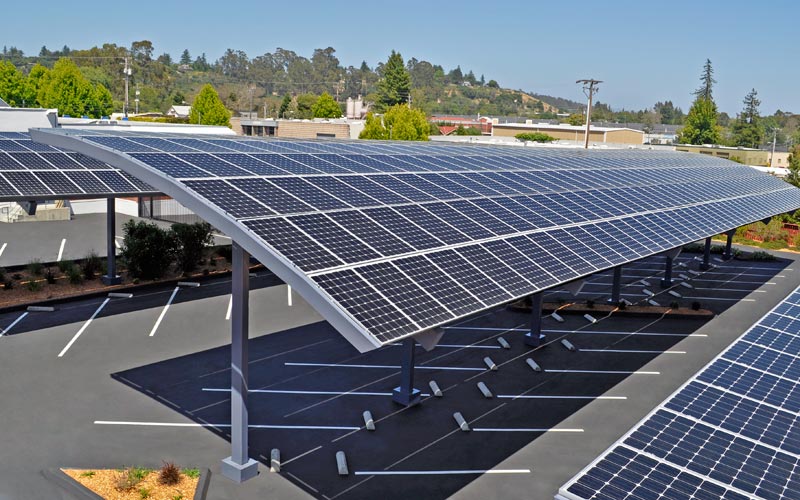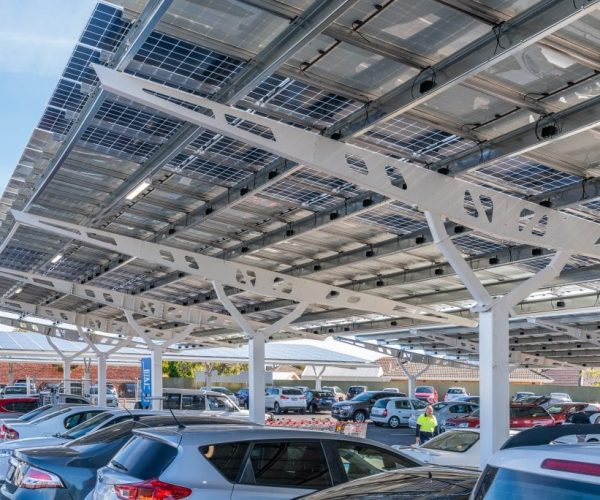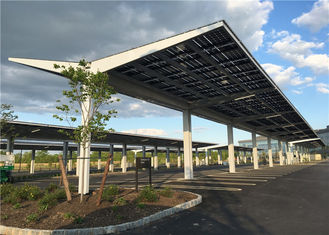Solar Shade Structures: Trick Variables to Take Into Consideration Prior to Designing & Constructing
Solar shade structures have actually obtained appeal as a multifunctional service that integrates the benefits of giving shade and protection with the generation of clean and also renewable energy. In this write-up, we will delve into the world of solar shade structure style and building and construction, exploring the varied choices readily available. From materials and also forms to installation strategies, we will check out how cutting-edge design choices can take full advantage of energy production while producing cosmetically pleasing and also practical structures that add to a sustainable future.
Solar shade structures have become a progressively prominent selection for a variety of applications, consisting of parking lots, leisure areas, and outside gathering rooms. These car park solar structures structures not just use shade and also protection from the sun's harsh rays however also harness solar energy to generate electrical energy. Allow's discover the key aspects of solar shade structures.
I. Materials for Solar Shade Structures

The products made use of in the building and construction of solar shade structures play a significant function in their durability, visual appeals, and energy performance. Right here are some typical products used:
Steel:
Steel supplies extraordinary stamina as well as sturdiness, making it an excellent selection for bigger structures. It can withstand extreme climate condition and give lasting assistance for solar panels. In addition, steel can be recycled, making it an environmentally friendly option.
Aluminum:
Similar to steel, light weight aluminum is light-weight, corrosion-resistant, and extensively used in solar shade structures. It is specifically suitable for areas near coastal areas, as it is resistant to deep sea corrosion. Aluminum structures also have a high recycling rate, adding to sustainability.
Wood:
Wood offers a much more natural as well as visually pleasing option for solar shade structures. It mixes well with outside settings and can be treated to improve its resilience and resistance to weathering. Utilizing sustainably sourced and also licensed wood is advised to lessen environmental effect.
Textile Membranes:
Fabric membrane layers provide flexibility as well as clarity, enabling diffused sunshine to infiltrate while giving shade. They are commonly made use of in sail-like structures, adding a distinct and also imaginative touch to outside areas. Selecting top quality, UV-resistant fabrics guarantees longevity as well as optimum efficiency.
II. Forms and Building Factors To Consider
Solar shade structures come in numerous sizes and shapes, providing customization choices to match various areas and functions. Right here are some preferred styles:
Cantilever Structures:
Cantilever structures include a looming style that offers unobstructed room underneath. These structures are specifically appropriate for parking area, as they supply enough shade without hampering auto parking or motion. Cantilever structures can be made with single or multiple arms, relying on the dimension and also design requirements.
Multiple-Column Structures:
Multiple-column structures provide a modular approach, providing flexibility and also scalability. This style allows for simple development as well as change to suit various areas and future demands. The spacing in between columns can be enhanced to make the most of shade coverage and photovoltaic panel plan.
Sail-like Structures:
Sail-like structures are commonly used in outdoor entertainment locations, offering a creative and also aesthetically attractive layout. These structures produce unique forms and also shadows while efficiently utilizing solar energy. The tensioned textile membranes made use of in sail-like structures can be tensioned with wires or steel frameworks to attain the wanted shape.
Architectural considerations, such as the positioning of the structure, also play a crucial function in optimizing solar power generation. Aligning the structure to encounter the sunlight's path optimizes energy manufacturing, while the inclusion of solar tracking systems further boosts efficiency by following the sunlight's movement throughout the day.
III. Installation Approaches and also Structure Systems
The installment methods for solar shade structures depend upon site problems and style demands. Here are some typical installment approaches:
Ground-Mounted Systems:
Ground-mounted systems are generally made use of in open rooms as well as require structures such as concrete grounds or ground screws. These structures are functional as well as can be conveniently adapted to optimize sunshine exposure. Ground-mounted systems are commonly utilized for solar car park structures and larger-scale shade installations.
Roof Installations:
Roof installments make reliable use of existing structures, such as structures or carports. These installations are space-saving and also can make use of the available rooftop location for solar energy generation. Roof installments call for appropriate structural evaluation to make sure the roof can handle the additional weight of the solar shade structure.
Integrated Systems:

Integrated systems combine the solar panels with the structure itself, flawlessly blending renewable energy generation with functional shade provision. These systems give a cohesive and also visually enticing style. Integrated systems are generally utilized in architectural tasks where the solar shade structure comes to be an important component of the general building or landscape layout.
Foundation systems play a critical function in the stability and long life of solar shade structures. Choices such as ballasted systems, heap structures, and concrete footings give stability in various soil problems. Design experience is important in identifying the proper structure system based on factors such as wind loads, dirt conditions, and also local building regulations. Appropriate structure design ensures the structure can stand up to environmental pressures and maintain structural honesty with time.
IV. Looks as well as Integration
Aesthetics as well as combination are necessary considerations in solar shade structure layout, as they make sure the structures blend sympathetically with the surrounding environment. Below are some bottom lines to think about:
Design Aspects:
Incorporating style components such as curved or geometric forms, shade personalization, and also imaginative patterns permits creative expression while preserving capability. This enables solar shade structures to end up being aesthetically enticing prime focus within their corresponding settings. The choice of shades can additionally aid with warmth representation, decreasing heat absorption within the structure.
Assimilation with Various Other Technologies:
Incorporating solar shade structures with other technologies as well as systems can better enhance their capacities. For example, integrating energy storage space systems allows the storage of excess energy for use during non-sunny durations, making the most of energy usage. In addition, clever tracking and control systems provide real-time data on power manufacturing and intake, enhancing performance and maintenance. Integration with LED lights systems can improve the performance of solar shade structures, extending their usability right into the evening hours.
Environmental Considerations:
Sustainability must be an essential emphasis when making as well as constructing solar shade structures. Choosing products with reduced ecological influence, making use of recycled or recyclable products, as well as carrying out energy-efficient innovations all contribute to creating eco-friendly structures. Life cycle assessments can be carried out to assess the overall environmental influence of the structure.
Often Asked Questions
Q1. What are the benefits of solar shade structures?
Solar shade structures offer shade and also security from the sun's rays while creating clean and also renewable resource. They supply a lasting option that contributes to decreased power expenses and ecological preservation. Solar shade structures can additionally improve outside convenience and also produce more usable spaces.
Q2. Can solar shade structures be customized to fit different places?
Yes, solar shade structures can be found in various sizes and shapes, allowing for customization based on the place's requirements and also visual choices. Design choices, materials, and also installment approaches can be customized to fit details applications as well as environments.
Q3. Are solar shade structures resilient?
Yes, the sturdiness of solar shade structures depends upon the products made use of and proper building and construction techniques. Steel and also aluminum structures are understood for their stamina and also longevity. Timber structures can likewise be resilient when dealt with as well as preserved effectively. Textile membrane layers must be chosen based on their resistance to UV radiation and weathering.
Q4. How can solar shade structures contribute to energy performance?
Solar shade structures create electrical power through photovoltaic panels, reducing reliance on traditional energy resources. Excess energy can be saved for later use, optimizing power application. Integrating energy-efficient lights systems as well as control systems additionally enhances energy performance.

Final thought
Designing as well as constructing solar shade structures requires cautious factor to consider of different variables, including products, forms, installation techniques, aesthetic appeals, and assimilation with other innovations. By leveraging cutting-edge design options and also building strategies, solar shade structures can supply shade and security while creating clean as well as renewable energy. As the need for lasting power solutions remains to expand, solar shade structures supply a functional and also aesthetically enticing technique to fulfilling both ecological and also practical requirements. With proper style as well as building and construction, solar shade structures can contribute to a much more sustainable as well as energy-efficient future.